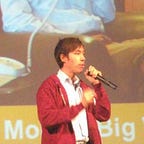Two outcomes in this week’s Judicial Convention show what makes Manhattan (New York County) different from all the other counties.
*Need a reminder of what a Judicial Convention is? Jump to the bottom*
First, a contested leadership election for the Convention.
Though the Judicial Convention is organized by the County Democratic organizations, they elect their own leadership for the few hours of work. Often that leadership is comprised of County Committee leaders, but with shuffled titles (i.e. the Chair of the County won’t be Chair of the Convention) and a few restrictions on who can do what.
This year it seemed like business as usual when most people in County leadership received a complementary title at the Judicial Convention. But, unexpectedly from the audience, a delegate rose to run for Assistant Secretary.
I have seen first hand what happens when people run for leadership positions in other counties and the State Party (before our current State Chair) — the Chair shouts them down, ignores unsanctioned nominations and holds elections over their objections.
But that’s not what happened. To avoid a long, contested vote at a Convention that was already going to take a fair amount of time, the Temporary Chair and other delegates were happy to create a Second Assistant Secretary position for the Convention so more people could serve. Yes, it’s a small position and there’s no need for controversy, but it demonstrates a completely different mindset from other boroughs which prioritize guarding any and all power for leadership.
But that is small fries compared to the second outcome: a contested election for Supreme Court nominee.
Unlike in, say Queens, where the Judicial Convention unanimously rammed through a County endorsed candidate who had been rejected by Queens voters for civil court a month earlier, Manhattan had a contest between two exemplary candidates. Some of this is due to Manhattan’s strong Independent Screening Panel — a crown jewel of earlier reform movements — the remainder is due to the fact the delegates in Manhattan are most often run by local clubs which are dedicated to their local constituents.
The New York County Party operates under a sort of federalist system which devolves most organizing responsibility to local Democratic Clubs; and some of those clubs are very serious about that! That means they are also very serious about their rights to vote. Although many Judicial Conventions do not result in contested elections because there are clear winners ahead of time (possible when there’s only a few hundred voters), when the elected delegates feel it’s necessary, County leadership does not endeavor to deprive them of a fair and open election.
While Manhattan’s Democratic Party has its shortcomings, I am proud of how our County organization handled the selection of Democratic nominees for NY Supreme Court this year; and honored to push for ever more transparency and public engagement as Party Secretary.
Watch the entire Convention unfold below in the official livestream of any County Judicial Convention — an advancement I’m glad to have brought to our County Organization as Secretary.
*What is a Judicial Convention*
By requirement of the State Constitution, in New York State there is no Primary for Supreme Court Justices. Instead, Party voters elect Delegates to make that decision at the Judicial Convention. Since Democrats win virtually all judicial elections in New York City, this is tantamount to an appointment.
